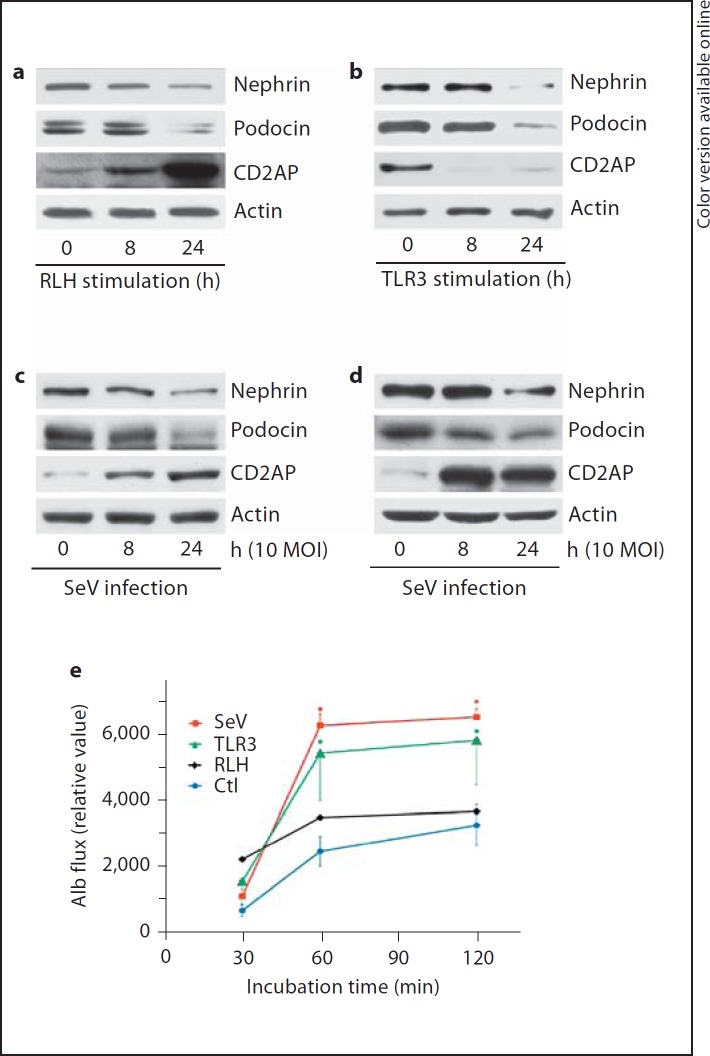Fig. 6.
TLR3 or RLH activation by dsRNA, or SeV infection, alters the expression levels of podocyte-specific proteins and changes transepithelial albumin flux. a Human podocytes were transfected with Poly(I:C) using FuGENE6 for the indicated time. Cell lysates were analyzed for nephrin, podocin and CD2AP by Western blot. b Human podocytes were stimulated by added Poly(I:C) for the indicated time; cell lysates were probed for nephrin, podocin and CD2AP by Western blot. For all blots, actin was used as a loading control. Human (c) or murine (d) podocytes were infected with SeV at 10 MOI; cell lysates were collected at the indicated time, and analyzed for nephrin, podocin or CD2AP by Western blot. e Differentiated human podocytes grown on Transwell® permeable supports were infected by SeV, TLR3 stimulation (TLR3) or RLH stimulation (RLH), or were left untreated (Ctl) for the indicated times. The content of fluoresceinated albumin in the apical chambers (relative units on the ordinate) indicates transepithelial flux from the basolateral medium across the monolayer. The error bars indicate 1 SEM. * p < 0.05, versus cells with no stimulus at the corresponding time point. For clarity, error for SeV is indicated only in the positive direction and error for TLR3 stimulation is indicated only in the negative direction. The (large) errors associated with RLH stimulation (p = n.s. vs. no stimulus) are not plotted.

